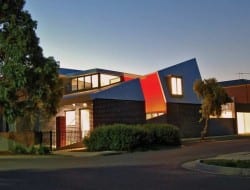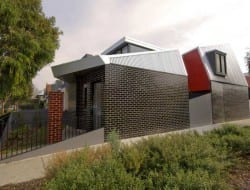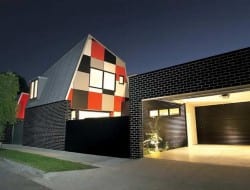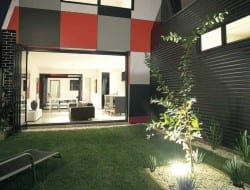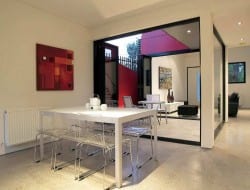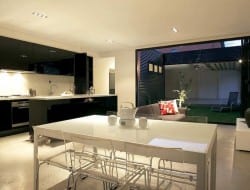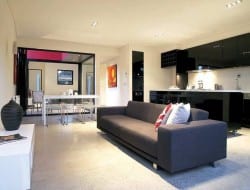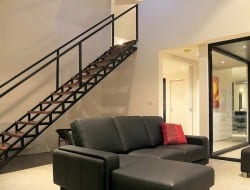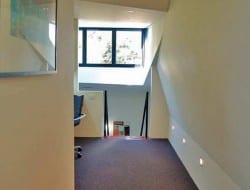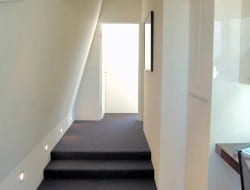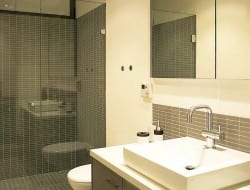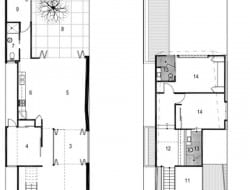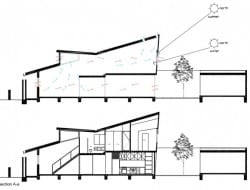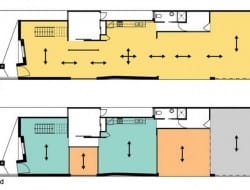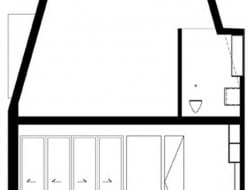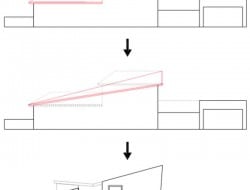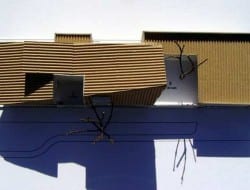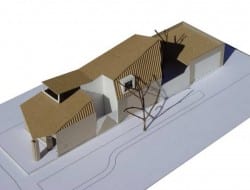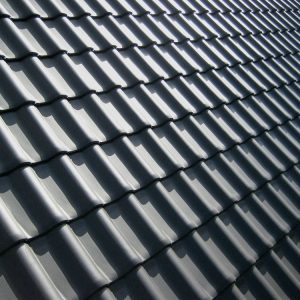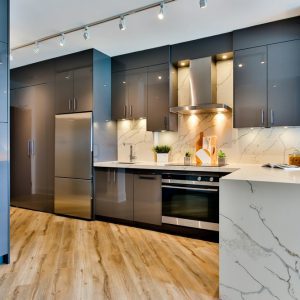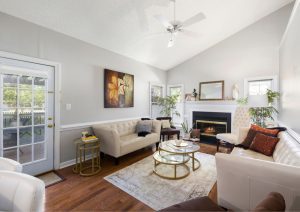Brunswick Victoria Australia – Kavellaris Urban Design
Lot size: 200 m2 (2,160 sq. ft.)
Built: 2006
Photography: Michael Payne
You’ve seen them! The McMansions on little blocks of dirt, looking for all the world as though they are waiting for the low-loader to come and cart them away. They are houses that will never suit their environment no matter how much the tiny garden grows. It’s often worse inside the homes, where myriads of small rooms compete for whatever ventilation exists.
Faced with a 200 m2 lot and the clients’ need for a substantial family home, the architect set out to prove that there is a cost-effective alternative to a mcMansion… an alternative with character, function and liveability.
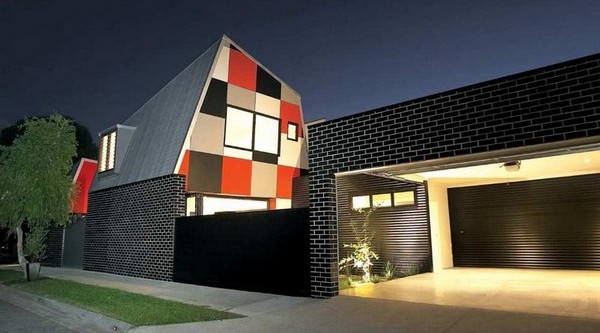
From the architect:
“This is a big house on a small block. It is both open and closed, solid and void. It is a critique and a response to the suburban housing vernacular and the planning laws that influence them. An endeavour to provide an alternative affordable housing to conventional European influenced copies of copies that proliferate throughout our suburban landscape. An area much discussed and debated in the last decade within our profession.
The subject site is nestled on a corner in the backstreets of Brunswick that enjoys a northern orientation which we chose to exploit. Although the site is just over 200m2, it consists of all the programs found in a conventional sub-urban housing on an acre block; 3 bedrooms, 2 ensuites, bathroom, study, 2 separate living zones, a courtyard, double garage and backyard.
The aim of the project was not to re-engage and profess our manifesto on architectural and cultural regionalist issues and ideas; but merely to demonstrate alternatives and possibilities using cost effective and generic standardised building methods such as brick veneer, painted compressed sheet, and Colorbond roofing and cladding. A ‘make do with what you have’ approach was the critical architectural idea and the platform for the design process. This project was part of an ongoing study within our office, seeking to eliminate the idea that architectural ideas can only be achieved with big budgets and costly construction methods.
Our response establishes an alternative architecture; another rhetoric. One critical of the arrangement and order of space, material, colour, scale, environmental sustainability and urban engagement – another language for the average home! The outcome seeks to raise questions rather than to dictate answers about the generic Australian House. This is a big house on a small block. Yet it is very small in comparison to an average family house.
The design response is informed by the formal manipulation of a traditional hipped roof; stretched from the first to ground floor on one continuous plane thereby uniting 2 separate building elements and eliminating separate roof lines for each level. The intervention also enables the building to engage with the prominent corner site which highlights the forced perspective to the entry and floating down pipe (or water feature), resulting in a multi-dimensional reading of the building at pedestrian level. This creates an ambiguity of scale and the demarcation between the ground and first floor. Where does the ground floor end and the first floor begin?

The plan is both open and closed, solid and void. The design intent was to compartmentalise the space with the flexibility of separating independent spaces such as living and courtyard, dining and backyard or uniting as one continuous open space.
The space is as much about section as it is about plan. Form dictates function, the northern orientation enabled us to integrate environmental sustainability through passive solar design, utilising the sloping roof as a method of cross ventilation through skylights and bi-fold doors.
The peeled back pop-up skylight sheds some light on the spatial conundrum inside. Bigness competes with the compressing warped roof to negotiate access from ground to first floor.
Our practice adopts the philosophy that constraints in whatever form – budgets, planning policies or contextual -may be manifested as part of the design process and part of the discourse. The house explores the physical and spatial constraints of suburban building as a discourse rather than a limitation. The roof is the predominate element, sculptured by the mandatory setback diagram dictated in local planning policies.
Instead of replicating classical aesthetic ideas, the house distorts them as architectonic techniques, as in the emphasized point of entry, which is highlighted on the exterior by the converging roof and fence lines.
Inside the double height entry, a dramatic staircase accentuates the foyer and strategic views throughout the inside and out of the house meet the visitor.
Do you think the architects met thier and their clients’ objectives?
Click on any image to start lightbox display. Use your Esc key to close the lightbox. You can also view the images as a slideshow if you prefer ![]()

